| Senior - BHPian
Join Date: Aug 2009 Location: Delhi NCR
Posts: 1,279
Thanked: 2,992 Times
| Re: International cars with the best looking engine bay
As luck would have it, I found a very interesting article from the year 2004 about the Porsche Carrera GT's engine.   Quote:
Next year will mark a decade since the LMP-styled Porsche Carrera GT went out of production. Good examples were trading around the sticker price ($440,000) until 2013 when actor and driver Paul Walker was killed in one along with his friend Roger Rodas. By May of the next year, values were up $50,000, and now they're into the stratosphere. By January 2016, a top example was at nearly a million dollars.
Surely, some of that increase has to do with the car's now-grisly history, but part of it also has to be the GT's still-high-tech 5.7-liter V10. The powerplant was originally built by Porsche for Formula 1 in 1992. The project was canceled, then resurrected for a Le Mans prototype, which was also canceled so it wouldn't conflict with Audi's Le Mans effort. Porsche used a 5.5-liter version in a concept at the Paris Motor Show in 2000 and, with help from all the new Cayenne SUV money that was pouring in, decided to build a run of 1,500 cars. Only about 1,300 were built due to U.S. airbag regulations, but the car became a legend.
The engine was placed amidships, just in front of the rear wheels, and delivered a still-impressive 612 hp and a less-impressive 435 lb-ft of torque. It had a 68-degree V, dual overhead cams, variable valve timing and sodium-cooled valves. Its redline was a racy 8,400 rpm. Mileage was 9 mpg in the city. Take that, EPA!
Its official 0-60 time was 3.9 seconds, but 3.6 wasn't unheard of in the wild. And remember, this was in 2004 when a Ferrari 360 could only muster a 4.6-second sprint to the same number. Besides that, just look at the thing: It's gorgeous, in an alien spaceship kind of way. | Source
Full Review from these guys from the year 2004 is here... Enjoy the read.   Quote:
SPECIFICATIONS
The first hurdle is the language barrier. Not the one between technical German and English—any part of the Carrera GT experience that does not translate can be communicated through a combination of hand gestures and low, appreciative whistling.
No, the problem comes with the growing realization that “supercar” isn’t going to be a strong enough word for us here, as there is a magnitude of difference between this über Porsche and other more, well, ordinary supercars. The Carrera GT could eat any production Lamborghini for breakfast, spend the morning snacking on Aston Martins and then lunch on Ferraris. What we need here is new nomenclature, something understated, yet snappy. How about hyper-ultimate megacar?
Which leads to question No. 1: How hyper, ultimate and mega is the Carrera GT? That’s what we’re here to find out, at the grandly titled Adria International Raceway, approximately 50 miles from Venice in Italy. As the first U.S. magazine to run and publish a full test of the $440,000 roadster, our mission is to gather as full a set of performance figures as the track here will allow. There is not enough space to mount a challenge on Porsche’s claimed 205-mph top speed, but we should be in a position to confirm, deny or possibly even better the company’s claim to a 3.7-second 0-to-62-mph (100 km/h) time.
First up, some acquaintance-making. Seen in the otherwise empty, concrete surrounds of the Adria pit lane, the two Carrera GTs on hand both look low, mean, hungry and gleaming with a slightly predatory malevolence. The front end comes across as scaled-up stock Porsche on first acquaintance, but look harder and you see some real hard man-menace in the slant and set of the headlights’ gaze. First choice: red or silver. The Italian magazine that we are sharing the day with does not mind, so we opt for the silver car. It is definitely the GT’s color (half of the production will be finished in it). And the silver car here also does without the no-cost optional a/c and stereo that most will ship with; every bit of weight saved should translate as performance gained when it comes to getting figures. Best of all, our decoding of the VIN suggests it is the first U.S.-spec car: If you see a red car in other magazines, know that it is European specification. There is no significant difference that we’ve been made aware of, but the car we tested was definitely meant for America. Far cry from Porsche’s 959, eh?
Before we start, let’s look at just what we’re going to start. The rear clamshell hood opens on an immaculately presented engine bay, every pipe clipped just so, suspension wishbones and rocker-operated springs and dampers polished to a near-concours shine.
(The car has not been specially prepared, engineering project leader Michael Hölscher tells us; this is how they all leave the factory.) The bay is dominated by a sturdy-looking carbon fiber yoke to which the engine and suspension are bolted and which is then attached to the chassis tub.
It is in the heart of this, surrounded by its webbed protection, that the star of the show sits, the 5.7-liter, quad-cam 40-valve V10.
Lots of road cars claim racing provenance for their engines; this is very much the real deal. The 68-degree banked motor was originally designed to power Porsche’s proposed LMP2000 Le Mans racer by ex-Formula One engine man Herbert Ampferer. To the dismay of the engineers at Porsche’s Weissach R&D facility, the LMP2000 project was pulled in November ’99 to concentrate engineering resources on the Cayenne, and instead of racing the engine Porsche chose to base the Carrera GT around it. Amazingly, it has made the transition to a production block largely unchanged. Quieter chain-driven cams have replaced the original gear-driven ones, bringing Porsche’s Variocam inlet timing adjustment with them. The engine now has to exhale through catalysts and has been slightly detuned for road use, but not by that much. The racer was reportedly set to make 680 hp at 10,000 rpm; the Carrera GT manages 605 hp at 8000 rpm, in conjunction with 435 lb-ft of torque. In a car weighing just 3043 pounds unladen, that is still more than plenty.
OUR FIRST BIT of driving is onto the local roads surrounding the circuit and into a couple of the neighboring towns for photography. It is also a good opportunity to conduct a quick poll on what the Italians make of this strange, silvery beast in their midst. The engine starts via a simple turn of the ignition key rather than through the sort of F-16 switch-and-button start procedure favored by some rivals. And apart from the towering center stack, complete with the wooden-handled gear change selector that defines the cabin, the design and finish are modest and restrained. Steering wheel and instruments are similar to those found in the current-generation 996, although the speedometer is calibrated to 225 mph. It takes awhile to realize the cabin is actually trimmed in unpainted carbon fiber, weave pattern clearly visible, set off by a few well-chosen leather panels and big, industrial-looking, floor-hinged alloy pedals.
For slow-speed use the tiny twin-plate ceramic clutch requires some acclimatization, but the gearshift is a real joy to use, sliding cleanly between the gates, despite cable operation and the distance between the selector and the transmission behind the engine. Dial up 2000 rpm, let the clutch out very gently and we’re moving, heading out of the gates of Adria in nearly a half-million dollars worth of the finest German performance engineering.
On local streets the Carrera becomes effortless again. It is a big, wide car—and sitting low in the cockpit within the slightly too intimate embrace of the bucket seats (one-inch-wider ones are optional), it is relatively hard to accurately place the car’s front corners on the road. But otherwise this might as well be a Boxster or a stock 911 in terms of the demands it makes on the driver: going, stopping and steering like it is no big deal, engine happy to rumble along at low revs in high gears. It is so good at convincing you this is nothing special that it comes as a fresh surprise to see each face as it turns toward you, breaks into a grin, gives a thumbs-up or even shouts encouragement.
“Ferrari?” asks an old man at an intersection. No, not a Ferrari. He looks surprised, maybe slightly offended that such an interloper could be traveling through his part of the world, but then he smiles broadly and his shoulders rise into an easily translated shrug: “Heck, it’s still pretty great.”
THE GT HANDLES local roads and local adulation, but it is not where we need to be for the proper dynamic interrogation. Before long we’re heading back in through the gatehouse at Adria and onto pit lane. The thick mist that covered the area early in the morning has gone, burned off by the rising sun. Track conditions are perfect: 66 degrees, clear skies, absolutely no wind.
Within the first couple of corners it is clear the GT is genuinely great, immediately at home in this environment. And the lack of scariness apparent on the road stays good on the track: It is benign, friendly and profoundly unsnappy, certainly on the generally slowish corners that make up Adria. The limits of adhesion are high, thanks to the road-roller profile of the vast Michelin tires. But the steering is as communicative as a Bud-fueled best buddy and throttle response is perfectly proportional. Within a short space of time—so short you should be amazed—it is possible to push the car hard, work the powerful ceramic brakes deep into the corners, trimming the line with the throttle. Scale up the sensation of driving a go-kart and you’ve got it, especially the instinctive sensation of weight transfer, helping the car to turn and grip and find its traction.
The issue of traction being where the traction control comes in. Traction control systems tend to bring out the machismo in most drivers. (“There’s no way a machine can do the job better than me!”) But with the Carrera GT, even one-time test pilot (and rally megastar) Walter Röhrl advised drivers to keep the electronic safeguards in place during even the hardest driving. With good reason, too. Unless you are Röhrl, you will almost certainly travel considerably quicker if you leave it activated and invest trust. Traction control off and the car gets skittish, sliding suddenly at the limit of
adhesion, power overwhelming the tires’ high lateral limits all the way up to seriously high speeds. But left on, traction management is a friendly system, engineered to stay in the background for as long as possible, intervening only as adhesion is lost, reining in the engine’s efforts with sensitivity and then feeding power back in smoothly and progressively as the grip returns.
As you might imagine, it is fast too. Adjective-stretching fast. Adria’s longer straights are torn up, reeled in, devoured and expelled. Before you have time to realize what’s happening, you’re already facing the next corner, braking mark long since miss-ed. Which is why it is fortunate the car’s ceramic stoppers grab as hungrily and tirelessly as they do, helping the tires to shed the vast amounts of energy they have just helped you to pile on. It is a magical, slightly surreal experience: so much speed, so little fear. You could scare yourself senseless going far slower in other, lesser supercars.
The only question remains that of how fast. It is time to turn the car over to contributing editor Pete Albrecht and his case full of timing gear to find out. It is just possible to make a quarter-mile strip out of the start/finish straight at Adria, but it leaves precious little space to stop before meeting the hungry-looking barriers that surround the outside of the first corner. Spectacular though the experience is from inside the GT’s cockpit, it is just about equally exciting viewed from outside, as the car nudges forward until the Correvit test computer’s arm espies the reflective strip that marks the start of the run. The car pauses, the engine revs rise, Albrecht blends in the clutch and—bang!—launch, accompanied by an angry chirp of tires
and a whiff of burning rubber. Then the Carrera GT becomes a rapidly diminishing shape heading down the straight, throwing angry, pure race car noise at the concrete stands and pit buildings. First, second, third and just a brief hint of fourth gear—until, in what seems an impossibly short space of time, the run is over, distance emphasized by the one-second delay between seeing the brake lights go on and hearing the engine note die.
Several runs later and we’ve got our answers, a best 0-to-60-mph of the day of 3.5 seconds, just inside Porsche’s official figure. The 0-to-100-mph figure of 7.06 seconds is just outside Porsche’s claimed 6.9 seconds for the almost-equivalent 0-to-160-km/h drag. But the quarter-mile time of 11.35 seconds, pulling a terminal of 129.5 mph, is astonishing. Remember, this thing wears license plates and passes emissions tests. The most gloriously unlikely statistic only comes later, with the full digest of the Correvit’s number-crunched statistics. The GT has the capacity to do 0 to 100 mph
and then back to rest again in just 11.6 seconds, in a distance of just 882 feet—considerably less than the length of the deck of an aircraft carrier. It is not quite as fast as a McLaren F1, 0.7 second shy to 100 mph, short by the same margin to 120 mph. But is there anything else out there that comes even close? Let’s hope Ferrari will lend us an Enzo, and Mercedes an SLR McLaren to help us find out.
Sure, by any rational standard $440,000 is a ridiculous amount to even think about paying for a car, even two or three cars. But after one day in the company of the Porsche Carrera GT, it really does begin to look dangerously like a bargain.
PERFORMANCE AS TESTED *
2004 PORSCHE CARRERA GT
ON SALE: Now
PRICE: $440,000
CHASSIS: Carbon fiber monocoque; rwd, two-seat roadster
POWERTRAIN: Mid-engine, 5.7-liter/350-cid dohc V10;
605 hp @ 8000 rpm, 435 lb-ft @ 5750 rpm; six-speed manual
COMPRESSION RATIO: 12.0:1
WHEELBASE, TRACK FRONT/REAR: 107.5, 63.5/62.5 inches
LENGTH/WIDTH/HEIGHT: 181.6/75.6/45.9 inches
CURB WEIGHT: 3043 pounds
SUSPENSION, FRONT AND REAR: Independent, dual control arms, coilover shocks, antiroll bar
BRAKES: 14.96-inch ceramic-composite vented discs with
six-piston calipers, front and rear; ABS
WHEELS AND TIRES: Forged magnesium wheels with
center bolt; 265/35ZR-19 front, 335/30ZR-20 rear;
Michelin Pilot Sport Radial X
FUEL CAPACITY: 24.3 gallons
CARGO: 2.7 cubic feet (front trunk)
0-60 MPH: 3.5 sec
0-100 KM/H (62.1 MPH): 3.63 sec
0-100 MPH: 7.06 sec
0-QUARTER-MILE: 11.35 sec @ 129.5 mph
0-100 MPH-0: 11.6 sec, 882 ft
20-40 MPH (FIRST GEAR): 1.1 sec
40-60 MPH (SECOND GEAR): 1.3 sec
60-80 MPH (SECOND GEAR): 1.4 sec
60 MPH-0: 104 ft
LATERAL ACCELERATION (50-M SKIDPAD): 0.95 g
TOP SPEED: 205 mph (mfr)
* Track testing performed by Pete Albrecht
| Source |



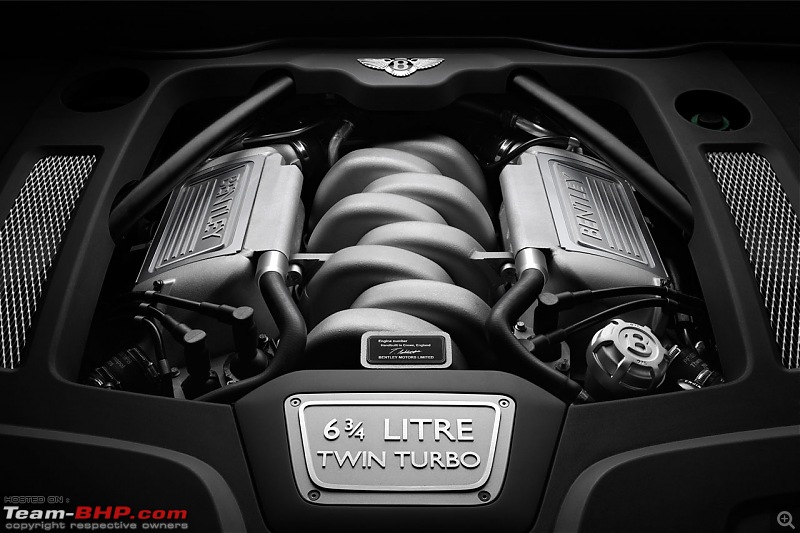
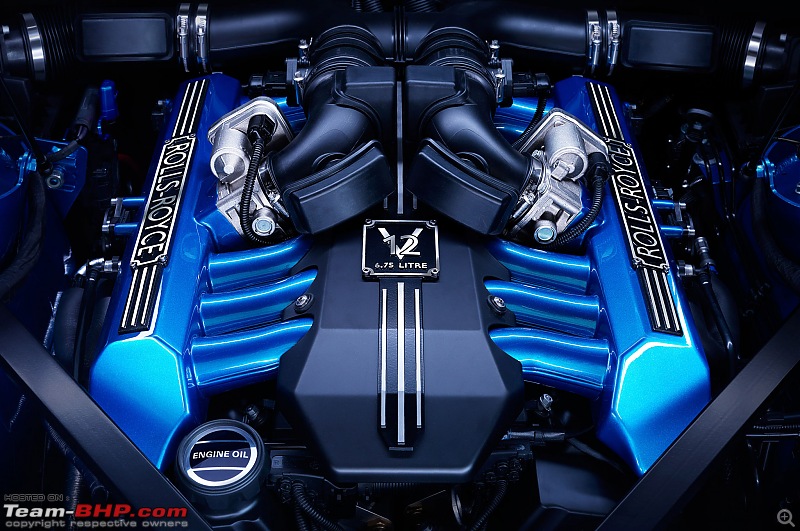





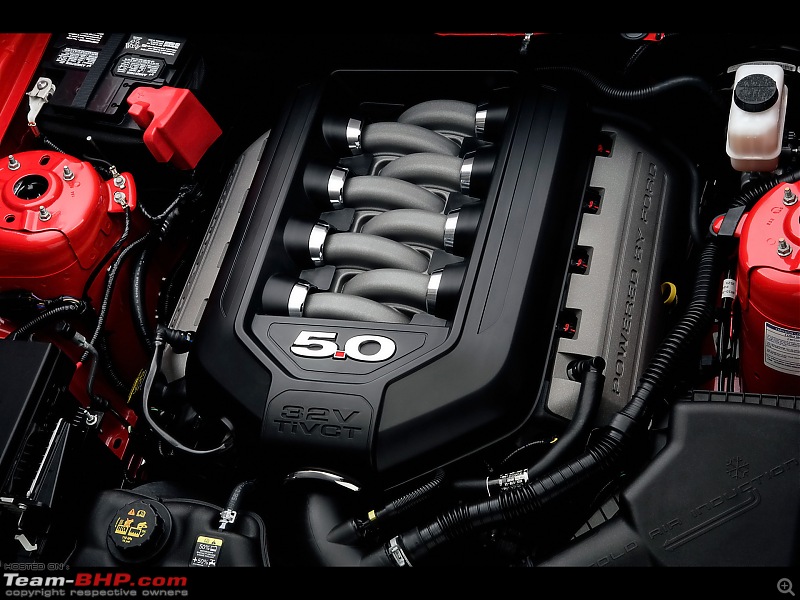
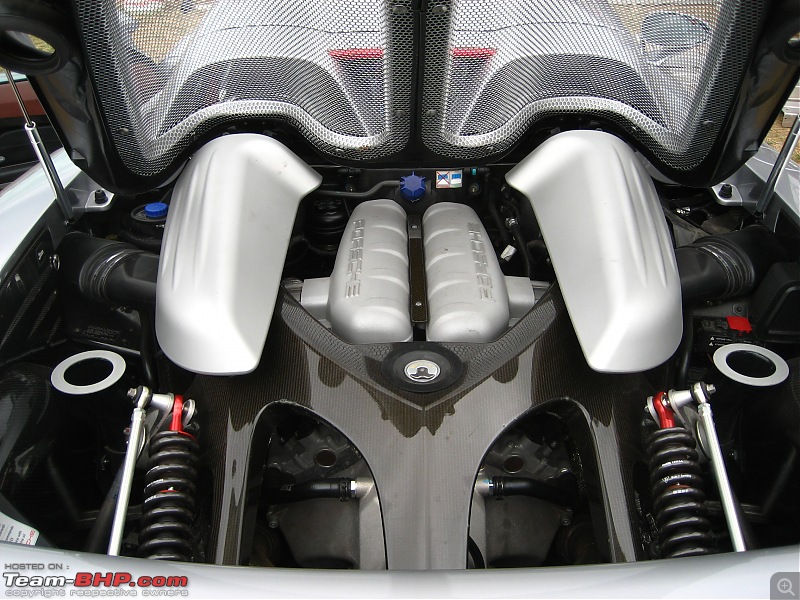
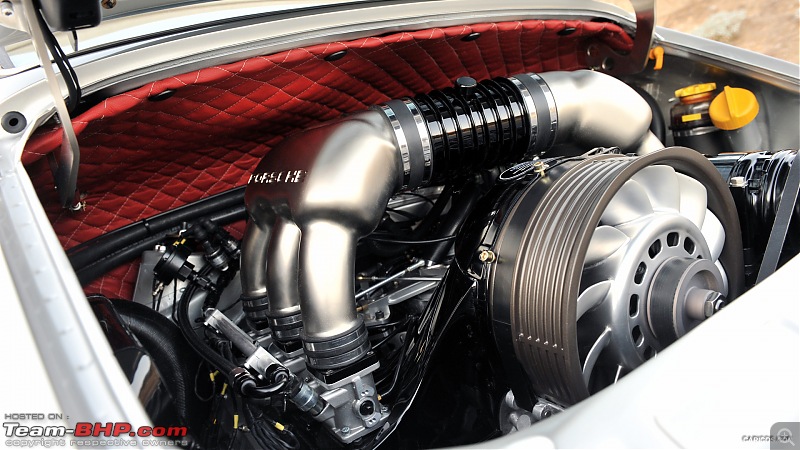



 (19)
Thanks
(19)
Thanks

 ()
Thanks
()
Thanks

 ()
Thanks
()
Thanks





 (1)
Thanks
(1)
Thanks


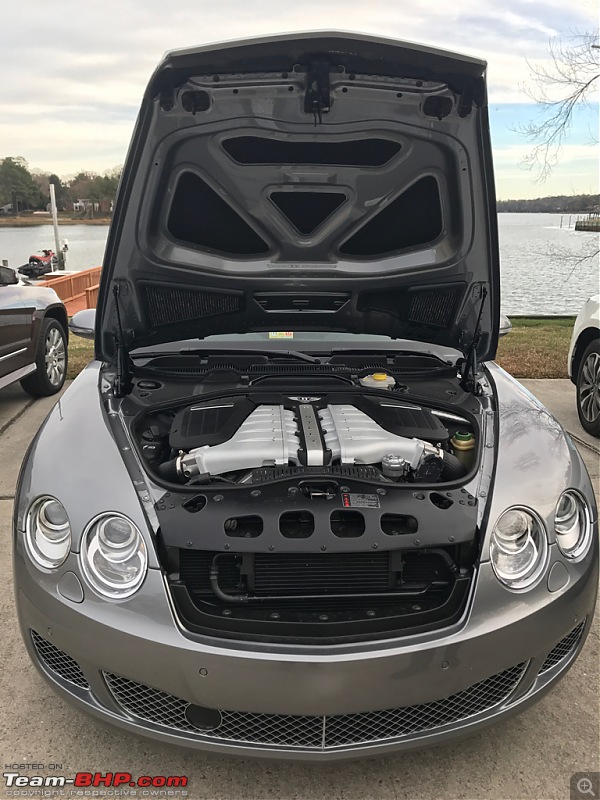
 (2)
Thanks
(2)
Thanks

 (1)
Thanks
(1)
Thanks




